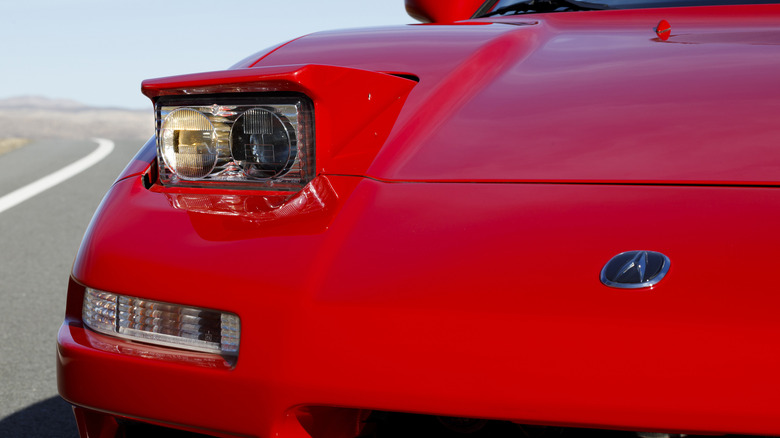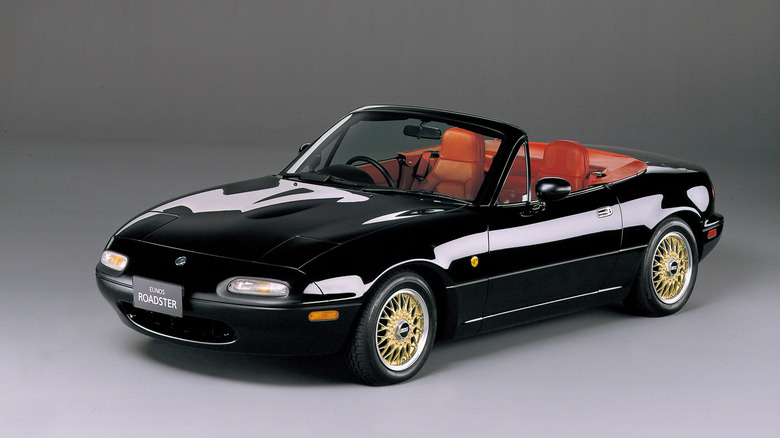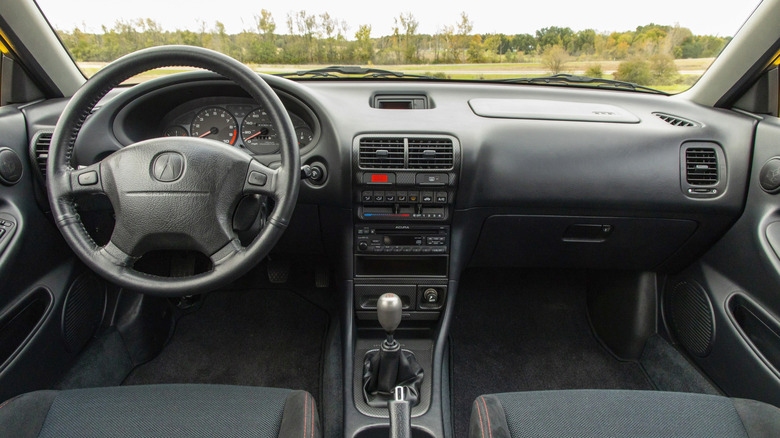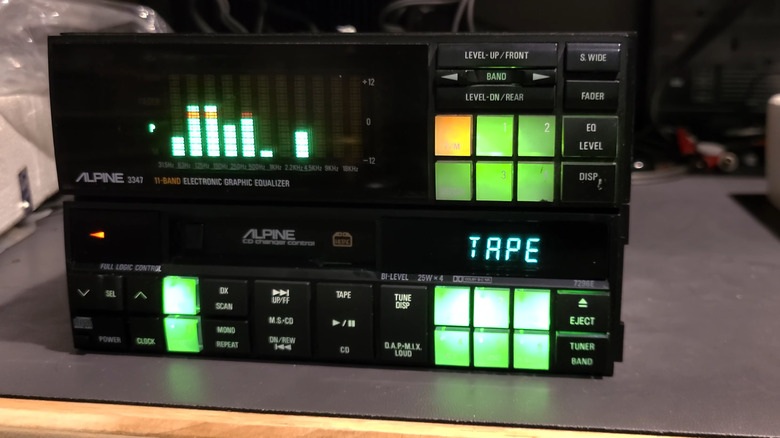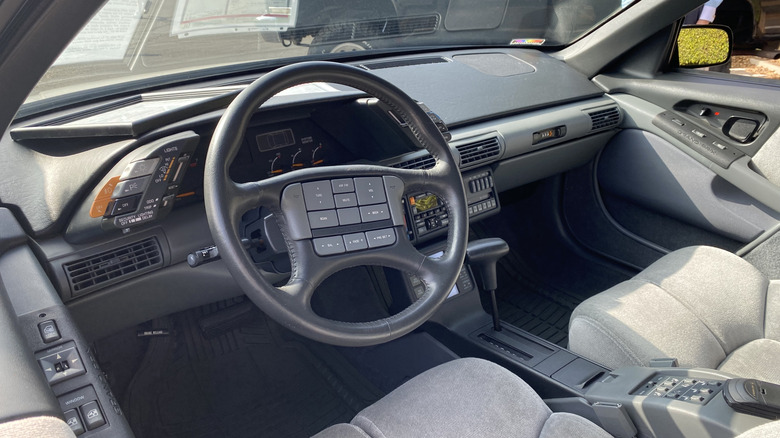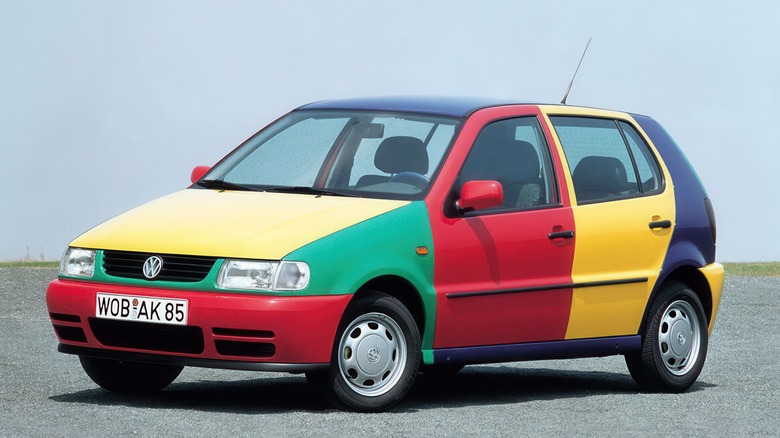5 Of Our Favorite Car Features Of The 1990s
Ah, the 1990s. We all remember them so fondly. Friends. The Matrix. Titanic. Backstreet Boys. Nirvana. 2Pac. The Prodigy. No social media. We could continue seemingly forever, but the message is clear — people are as nostalgic about the 1990s as perhaps any other decade.
The story is practically the same in the automotive world. The 1990s gave us legends like the McLaren F1, Toyota Supra Mk4, Mazda RX-7 FD, Honda NSX, Nissan Skyline GT-R R34, and the Dodge Viper. These are just some of our favorite cars of the 1990s. We could continue for ages and still not mention all four-wheel legends from this era.
You could argue that today's automotive scene doesn't have nearly as many potential legends. The same is true for most car features of the 1990s, which are all but dead in today's world. These were as memorable as the cars themselves, reminding us of a time when automakers dared to do something bold and different. In this piece, we'll have a closer look at our favorite 1990s car features that we sorely miss today. Buckle up, because this nostalgia trip hits like a Kurt Cobain riff!
Pop-up Headlights
Pop-up headlights weren't invented in the 1990s and have been around for almost 60 years by that time. However, this decade was undoubtedly the crescendo, giving us some of the coolest cars with pop-up headlights ever built.
Crucially, pop-up headlights trickled down in cheaper vehicles, making them a frequent sight on public roads. Mazda is a great example of an automaker that embraced pop-up headlights for its range of vehicles. The RX-7 FD. MX-5 Miata NA. Even the automaker's compact car at that time, the 323F, had pop-up headlights. The Toyota MR2 SW20 and Ford Probe could also wink at pedestrians yet didn't cost much money. Volvo's first-ever front-wheel-drive vehicle, the 480 hatchback, also had pop-up headlights.
Of course, high-end cars also had pop-up headlights. They were integral in the design of the Corvette C4 and C5, and decorated Honda's/Acura's first-ever supercar, the NSX. Meanwhile, BMW combined its traditional kidney grille with pop-up headlights, creating one of the coolest GT cars on sale during the 1990s. Lamborghini's Countach successor, the Diablo, doubled down on the pop-up headlight craze, and let's not forget the F40 — Ferrari's most impressive V8 supercar ever built.
Unfortunately, no vehicle is currently on sale with pop-up headlights, and it's all because of European regulations, where pedestrian safety is as important as passenger safety. While not banned, pop-up headlights make it hard for automakers to meet these regulations. When they are opened, pop-up headlights also significantly increase aerodynamic drag, which contributes to higher fuel consumption and emissions.
Standard Stick-Shift Gearboxes
Not many cars offer a manual transmission option in 2025, and most of them are expensive enthusiast cars. Want a more engaging driving experience in a cheapo economy car? Don't hold your breath. Nissan recently ditched the stick shift Versa, while Toyota did that for the Corolla Hatchback in 2023.
However, according to CarMax, in the late 1990s, a quarter of the vehicles sold in the U.S. were equipped with manual gearboxes. Not only that, but manuals came standard in the cheapest trims. Back then, automatics were the costlier, luxury option. For example, the base, three-door Civic Hatchback came with a standard manual transmission in 1995. That same year, a three-speed automatic costed $500 more than a similar manual Corolla sedan. Automatics in the 1990s consumed more fuel, too, and accelerated more slowly. North Americans still liked them more than manuals, but at least enthusiasts didn't need to pay a fortune for a cheap, engaging, and enjoyable car.
Unfortunately, the manual transmission lost its performance edge over the years. Today, automatics are significantly quicker. For instance, Car and Driver tested the 2024 Volkswagen Golf R measured the 0-60 times of the manual and automatic versions. The manual did the sprint in 4.9 seconds, while the automatic was a whopping 0.8 seconds faster. The automatic had a two-mpg better fuel economy, too. Public roads are not built for racing, anyway, and a manual will always be more engaging and fun on a twisty road — simple as that.
Aftermarket Head Units
Infotainment and audio systems are becoming more integrated lately, making it almost impossible for potential aftermarket upgrades. Vehicles in the future will also be "software-defined vehicle," with closed-off operating systems that will turn them into "walled gardens," similar to what Apple is doing. If you want an upgrade, you'll get it as a software update, albeit at a cost.
Back in the 1990s, better-sounding, better-looking, and more sophisticated stereo systems than the factory ones were available in electronic shops. This made upgrading the sound — and dashboard — super easy. Whether your car supported Single-DIN or Double-DIN stereo, options were basically limitless.
They were mega cool, too. Whether you were team Kenwood, Pioneer, Alpine, or Clarion, the designs were youthful and flashy. They sounded better than OE stereo systems and offered many more features. For instance, if your car only had FM/AM radio, an aftermarket head unit could bring CD playback into your cabin. You could also tweak your sound with 20-band equalizers on some models — people were serious about sound quality. The 1990s Alpine 7980 had a 3-CD changer built inside the dashboard unit, and let's not forget the crazy graphics, which added flair to any interior!
You can also get better sound today, but you'll need to check the box when buying your car. Depending on the brand, that can be costly; getting Mark Levinson Audio in a 2025 Lexus LS costs $1,940, while the Burmester High-End 4D Surround Sound System in the S-Class Maybach will make your wallet $6,800 lighter.
Physical Buttons Galore
If those button-heavy audio systems weren't enough of an indication, look at the picture of the 1988-1996 Pontiac Grand Prix. It's even hard to count all those buttons. The steering wheel, center console, and even the center armrest all have at least a dozen buttons. Memorizing all those functions was almost impossible unless you studied the owner's manual in the greatest detail.
The same was true for many cars during the 1980s and 1990s. These were the decades when technology started appearing in regular vehicles, and there was only one reliable way of controlling them — buttons and knobs. Touchscreens were in their infancy during the 1990s and not exactly usable. Slow. Convoluted. Not something you'd want to interact with while driving. Now, of course, having dozens of buttons scattered around the cabin is also not ideal. Fortunately, most cars from the 1990s struck a good balance. The BMW 3-Series E36 had buttons positioned in an orderly manner, and big climate knobs.
Unfortunately, touchscreens dominate today's vehicles, even for basic tasks like adjusting climate. This adds complexity to a mundane task and poses a safety risk. Notably, a 2022 study by Swedish magazine "Vi Bilägare" found that drivers needed much more time to complete tasks using the touchscreen as opposed to physical buttons. Thankfully, some automakers are avoiding touchscreen controls for basic car functions. Soon, most others will be forced to do that, as EuroNCAP will require cars to have buttons to earn a five-star rating.
Funky Exterior Colors and Interior Fabric Patterns
Modern cars have ever more striking designs, which is great, but they are painted in drab, tiresome colors. Last year in the U.S., 81% of the cars sold were monotone, i.e., they are either painted white (25%), black (22%), gray (20%), or silver (14%). The same is true overseas. Look at a car park, and it appears so monotone, right? Don't we want our cars to be like nature, which is, vibrant?
Look, we won't argue with customer preferences, but things were different during the 1990s. Cars came in bright, vibrant colors and metallic, frosted or pearlescent finishes. Black, white, and red body colors still dominated the scene, but automakers experimented with various shades of blue and green draw more attention. Some even went the extra mile, like Volkswagen did with the strange Polo Harlequin. This city car's panels were painted various colors, with each customer receiving a unique, random combination.
Today's drab, monotone interiors also suggest that humanity might have lost the joyful spirit. Good luck finding a modern car with bold, colorful seat fabrics, because that's so passe today. In the 1990s, you could order an E-Class W210 — a luxury car — with a funky pattern on the seats and dashboard trim. The Golf GTI Mk3, Astra GTE 16v, and even the seventh-gen Corolla came with intricate patterns. We know these aren't for everyone, but could automakers at least give us the option?
